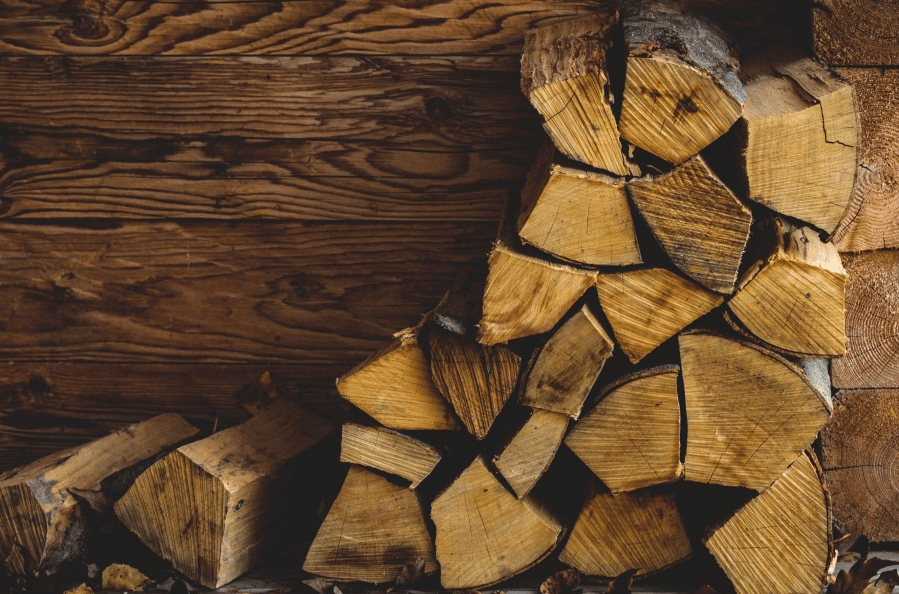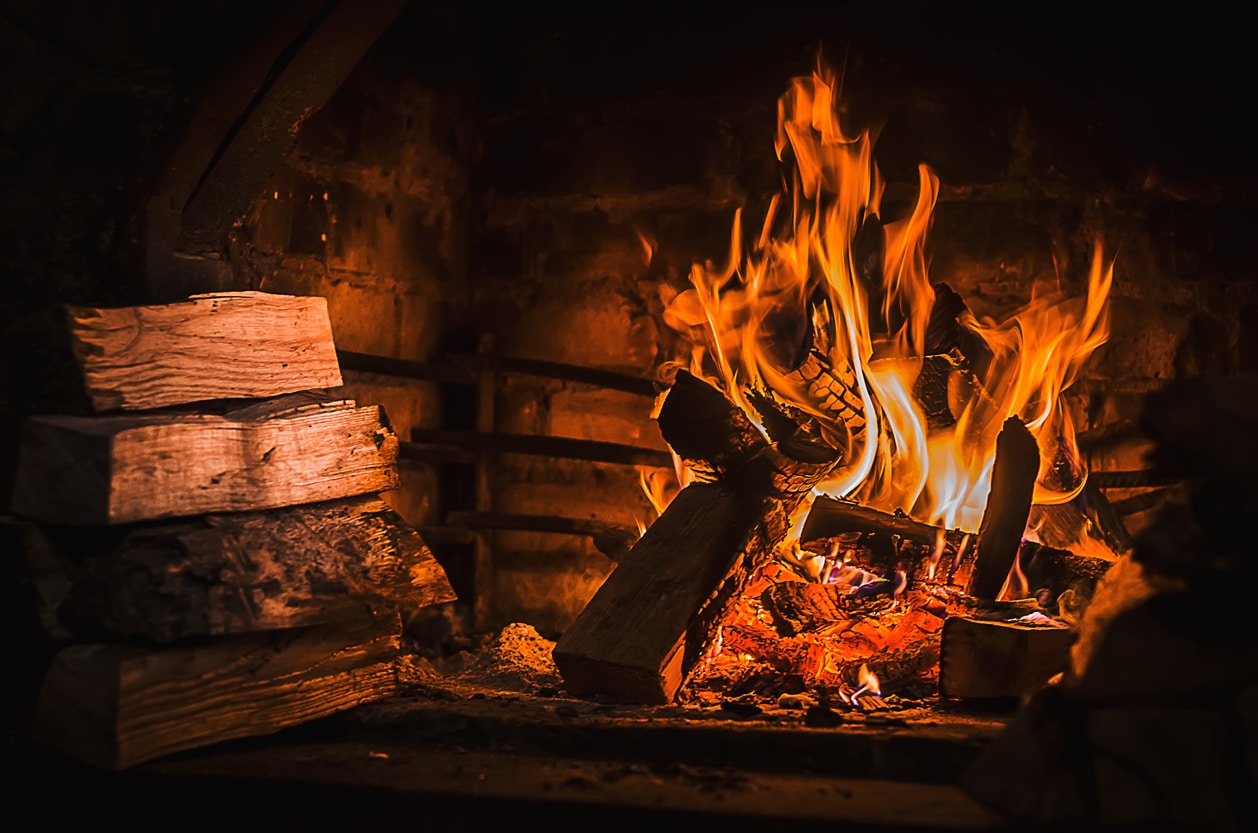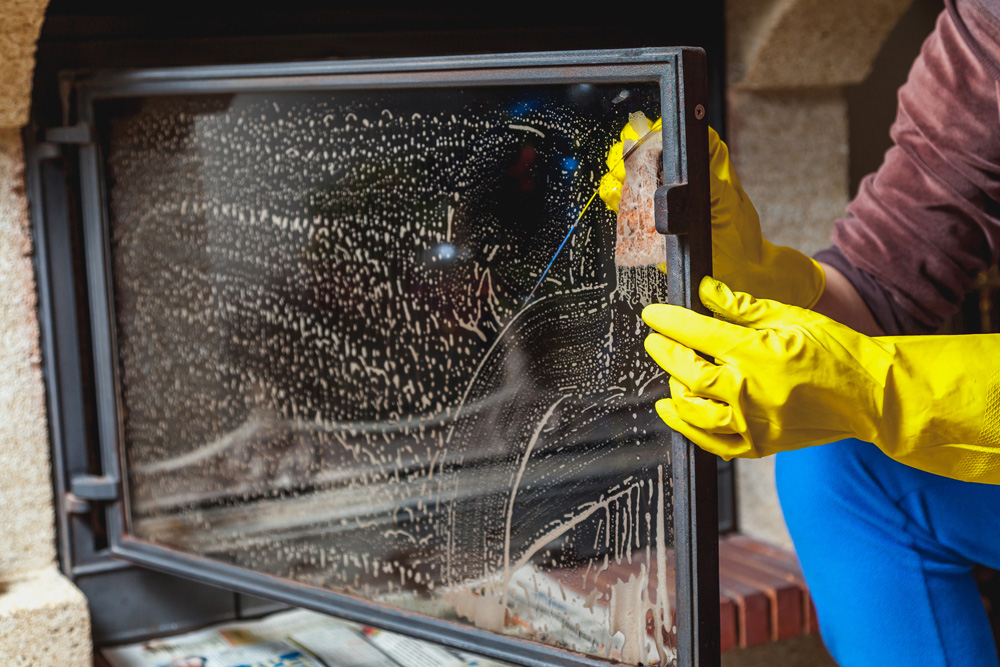Whether you have decided to opt for a wood stove or a classic fireplace, nothing is more annoying than spending all winter tirelessly rubbing the glass of the insert to enjoy the beauty of the fire burning in the hearth. Each outbreak results in a chore of cleaning with ash or salty white vinegar on a ball of crumpled newspaper to remove the soot that accumulates too quickly on the window. It is nevertheless entirely possible to limit this inconvenience by understanding the very reasons for the occurrence of this clogging. There are also easy-to-implement techniques to keep your insert window clean for longer after taking care to clean the tile.
You will no longer spend the whole winter scrubbing to prevent the glass of the insert from blackening and becoming too dirty!
1) Take a more suitable fuel

Very often, clogging problems such as the occurrence of too much smoke can be explained by the use of damp wood, poorly stored or cut too recently. In addition, this type of wood risks giving you poor performance. Ideally, you should use a wood cut for more than two years and kept dry and protected from bad weather. This will ensure good yield and reduce the risk of premature blackening. To have the assurance of quality wood, with a humidity level less than 20% and good heat output, you can decide to opt for densified or certified logs. Otherwise, ban treated and resinous wood, and favor hardwood logs (oak, beech, hornbeam, ash, etc.).
2) Ensure air circulation in the chimney or stove to reduce clogging of the glass
Properly filling and arranging the wood for a successful fire is an art! If you put too many logs, combustion will not be optimal. After filling, check carefully that there is a space between interior glazing and wood. This will allow the air to circulate properly and will help reduce clogging of the window. Along the same lines, take a careful look at all air intakes. It should be ensured that they are well adjusted and they must not not be obstructed or dirty.
Finally, if necessary, do not hesitate to partially open the insert door when starting a powerful fire to reduce the formation of black smoke linked to the presence of cold air in the duct and accelerate the outbreak. You can then gradually close the window to reduce air entry.
3) Do not light small fires to preserve the glass of the fireplace or stove

The window will be less likely to get dirty with powerful combustion. So, above all, don’t let your appliance idle and get into the habit of making powerful fires when you use the fireplace or stove. This will allow the heat of the air in the pipe to increase more quickly to reduce the risk of lack of draft and clogging.
4) Optimize the chimney draft to keep the glass clean for longer
If the draft is not good, combustion will be less efficient and the risk of clogging increases. To improve draft (and prevent fires!), make sure the exhaust duct remains clean (by chimney sweeping) to prevent the backflow of smoke and the accumulation of black soot on the window. In addition to sweeping the installation to reduce its clogging, ensure the dimensioning of the conduit and its configuration (it must not be too short or too elbowed and the height of the roof outlet must be good) with a professional or your installer. Finally, also check the quality of the window seal which must be perfectly waterproof for optimal operation.
5) Open a window to your fireplace
If you think that your installation lacks draft, you can open a nearby window to bring in oxygen and allow better combustion. If, however, you do not want to keep the window open all winter, you can also call a professional to install an outside air intake pierced through the wall of the house. This air intake will then be connected to your stove using a combustion air inlet kit.
6) Prevent the stove or fireplace glass from blackening with soap

Normally, by taking into account all the advice mentioned above, you should no longer have a problem with blackening of the glazing of your installation. However, if you are waiting for a professional to come or you have not yet managed to identify the source of the problem, you can in the meantime use a very clever trick to prevent soot deposits. This simple technique consists of brush the window with white or translucent liquid soap. This will leave a protective film which will keep the window clean longer without effort. This will prevent it from becoming stained black or getting dirty too quickly. After burning, all you have to do is wipe off the residue and repeat the application for the next fire.


